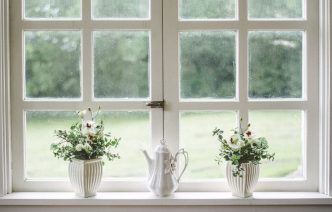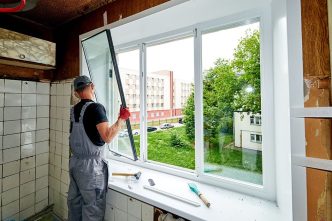Making Sure Windows and Doors Are Sealed
Written by: Bill Herren
With continuously rising energy costs, homeowners are increasingly trying to find ways to save money. Along with switching out older lightbulbs for more energy efficient ones, and having people take shorter showers to conserve water, there are many other things that can be done to make a home more efficient. One of the first things that homeowners should look into when taking steps towards energy efficiency is a home’s air leakage. Making sure that windows, doors, and other parts of the house are properly sealed will keep warm air out from leaking out and cold air from seeping in. This can ultimately save homeowners a significant amount of money on energy costs.
Why Sealing Your Home is Important
Making sure a home is properly sealed is important for a number of reasons. The biggest motivation for ensuring that a home’s leaks are sealed is the savings one will see on their energy bills. It is also important to deal with air leaks because in the summer months an unsealed home can lead to excessive moisture while the winter months can lead to extremely dry conditions. For the comfort and health of a home’s occupants, it is important to seal all air leaks. While most newer construction is tested for leaks, older homes have probably not been and owners will need to take it upon themselves to identify and correct problem areas.
How To Identify Air Leaks
The first step in sealing air leaks is identifying them. There will likely be some obvious places where air leakage occurs such as under doors or around windows. To identify less obvious gaps where air can leak, hiring a professional to conduct an energy assessment is advised. There are also some steps you can take to identify some of the air leaks yourself. Start on the outside of the house and perform a visual inspection, looking at exterior corners, where siding meets, and any other areas where air might leak. Continue inside and inspect window and door frames, outlets, fireplaces, vents, the place where cable and phone lines run into the house, and baseboards. You should also look for spaces around wires, and pipes. For more difficult to identify leaks, a building pressurization test can be performed. Simply wait for a cool, windy day and shut off all combustible appliances. Shut all doors, windows, and flues. Turn on any exhaust fans in the house that blow air outside. Finally, light a stick of incense and gently wave it around the edges of areas in which leaks are suspected. If the smoke is blown around or wavers, there is a draft that should be repaired.
How To Seal Any Leaks Found
Once all of the air leaks in the home have been identified, it is time to seal them. Doors and windows should be weatherstripped, or caulked if necessary. Caulk should also be used to seal leaks around duct work, wiring, or plumbing. Remove outlet covers and place foam gaskets behind them and use foam sealant on larger areas such as baseboards. If the home has a fireplace it should be ensured that the flue damper in good shape and is closed tightly whenever the fireplace is not in use. Making sure that fireplace leaks are sealed with fireproof materials such as sheet metal is also necessary. Proper insulation in the home will also make a huge difference in conserving energy and cutting down on air leaks.
While there are some easy steps that can be taken to prevent air leaks, completely sealing a home can be a big task and it may mean enlisting the help of professionals. Ultimately, properly sealing a home should save you money on energy bills. While completely sealing a home will cost some money upfront, you will see a return on your investment. Just spending a few dollars on weatherstripping and caulk can lead to a noticeable savings. To learn more about preventing air leaks and properly sealing a home, consult the following links.
Additional Resources:
- Tips: Sealing Air Leaks
- Why Seal and Insulate?
- How To Make Your Doors Draft Free With Weatherstripping
- 7 Steps To Save Money By Sealing Leaks and Drafts
- Sealing Fireplace Air Leaks
- How To Replace Weatherstripping On An Exterior Door
- How To Caulk Window Air Leaks
- The Home Energy Saver
- Testing An Existing House For Air Leaks
- How To Stop Interior Drafts
- Sealing Home Drafts
| Wood Windows and Doors | Additional Window Options | Home Services |
|---|---|---|


